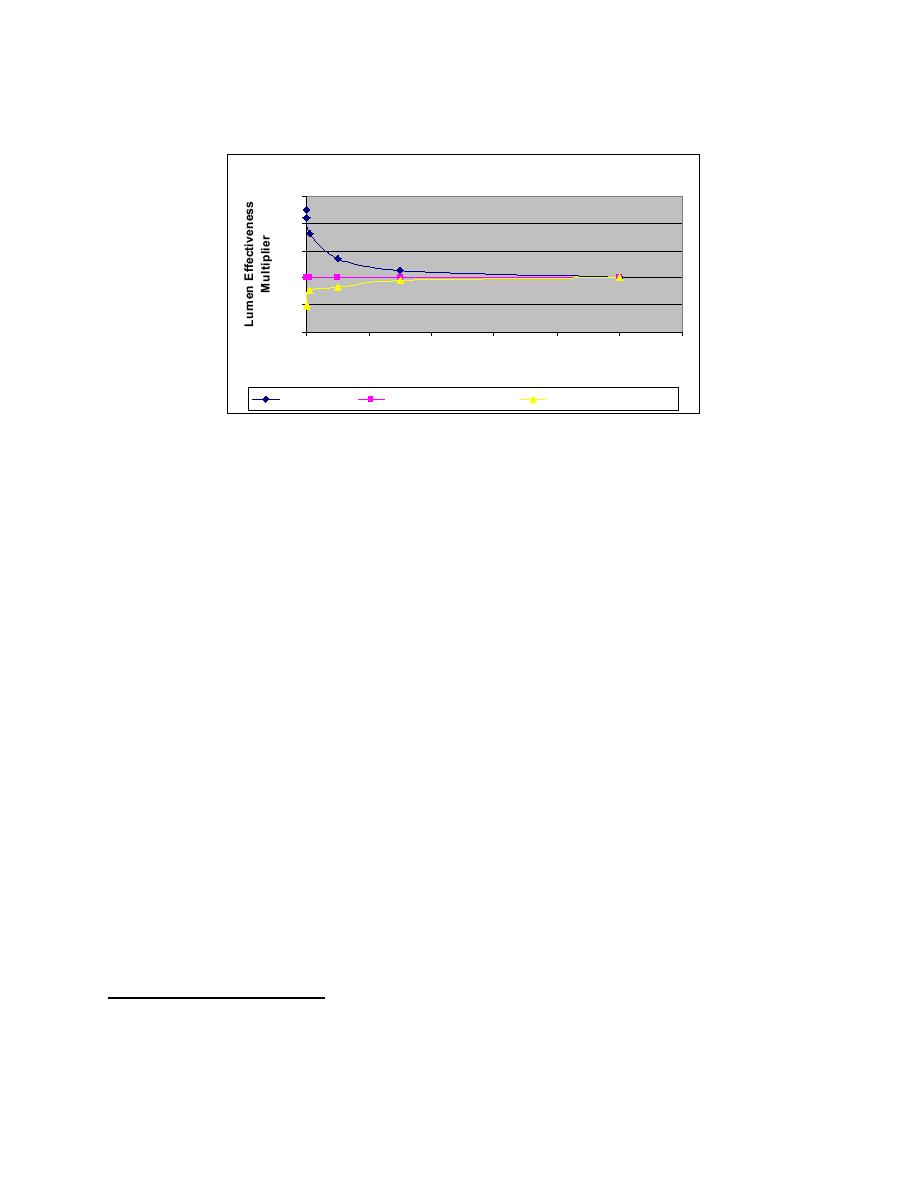
UFC 3-530-01
22 August 2006
Lumen Effectiveness Multipliers
2.5
2
1.5
1
0.5
0
0
2
4
6
8
10
12
Luminance
Metal Halide
High Pressure Sodium
Low Pressure Sodium
2-5.3
Requirements for adequate illuminance:
Follow IESNA recommendations by evaluating all QVE criteria including
illuminance, paying particular attention not to overlight. Refer to specific
applications in Chapters 6 and 7.
2-5.4
Considerations for adequate illuminance:
Design ambient lighting levels to 1/3 to 1/2 task lighting levels. Add task
lighting to increase light level.
Use white light sources for exterior lighting. Refer to lamp
recommendations in Chapter 5, "Lighting Equipment".
2-6
SURFACE BRIGHTNESS. We "see" brightness; we don't see lighting levels
or lux. Our perception of spaces depends on how surfaces are lighted. For example, if
walls are lighted, the space feels large and open. With the walls and ceiling lighted, a
space looks bright and cheery. With dark room surfaces, the space feels oppressive
facades as a first priority, then horizontal surfaces such as ceilings and canopies. The
least effective surfaces to light are floors.
2-6.1
Traditional lighting design has emphasized lighting level as the only criteria,
ignoring the importance of surface brightness. For a more effective design, light the
walls and ceiling and use light colored surfaces.
4
Lewin, Ian. "Lumen Effectiveness Multipliers for Outdoor Lighting Design." Journal of the Illuminating
Engineering Society, Summer 2001.
5
"Vision and Perception", Lighting Handbook Reference and Application, Chapter 3, Ninth Edition (New
York: The Illuminating Engineering Society of North America, 2000), p. 3-38.
2-8



 Previous Page
Previous Page
